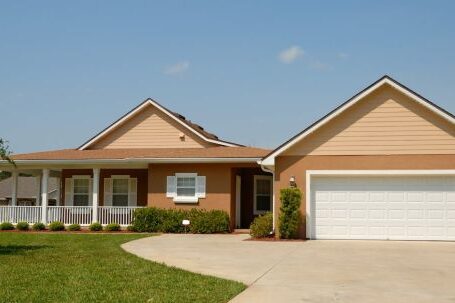As concerns about climate change continue to grow, many homeowners are looking for ways to make their homes more energy-efficient and eco-friendly. One area where significant improvements can be made is in home heating and cooling. By implementing a few simple strategies, homeowners can reduce their energy consumption and lower their carbon footprint. In this article, we will explore some eco-friendly tips for home heating and cooling.
Insulate Your Home
One of the most effective ways to reduce energy consumption is to properly insulate your home. Insulation helps to keep the warm air inside during the winter months and prevents the hot air from entering during the summer. By insulating your walls, attic, and floors, you can significantly reduce the need for artificial heating and cooling.
Seal Air Leaks
In addition to insulation, it is essential to seal any air leaks in your home. Common areas where air leaks occur include windows, doors, and electrical outlets. By using weatherstripping, caulk, or sealant, you can prevent warm or cool air from escaping your home, making it more energy-efficient.
Utilize Natural Ventilation
During the warmer months, take advantage of natural ventilation to cool your home. Open windows and doors to allow fresh air to circulate, creating a cross breeze. This can help reduce the need for air conditioning and lower your energy consumption.
Upgrade to Energy-Efficient Appliances
When it comes to home heating and cooling, choosing energy-efficient appliances can make a significant difference. Look for appliances with a high energy-efficiency rating, such as Energy Star certified products. These appliances are designed to use less energy while providing the same level of comfort.
Use a Programmable Thermostat
A programmable thermostat allows you to set specific temperatures for different times of the day. This means you can adjust your home’s temperature to be cooler or warmer when you are not at home, saving energy and reducing your heating and cooling costs.
Install Ceiling Fans
Ceiling fans are an excellent addition to any home, as they can help circulate air and make the room feel more comfortable. During the summer, ceiling fans can create a cooling effect, allowing you to raise the thermostat temperature and reduce your reliance on air conditioning. In the winter, ceiling fans can be reversed to push warm air down from the ceiling, making the room feel warmer.
Consider Renewable Energy Sources
If you are looking to take your eco-friendly heating and cooling efforts to the next level, consider installing renewable energy sources, such as solar panels or geothermal heating systems. These systems harness the power of the sun or the earth’s natural heat to provide energy for heating and cooling, reducing your reliance on traditional energy sources.
Maintain Your HVAC System
Regular maintenance of your heating, ventilation, and air conditioning (HVAC) system is essential to ensure optimal performance. Clean or replace air filters regularly to improve air quality and airflow. Additionally, schedule annual professional inspections to identify and address any potential issues before they become major problems.
In conclusion, by implementing these eco-friendly tips for home heating and cooling, homeowners can reduce their energy consumption and make their homes more sustainable. Insulating, sealing air leaks, utilizing natural ventilation, upgrading to energy-efficient appliances, using a programmable thermostat, installing ceiling fans, considering renewable energy sources, and maintaining your HVAC system are all simple yet effective strategies that can make a significant impact. By making these changes, homeowners can not only lower their energy bills but also contribute to a greener and more sustainable future.





